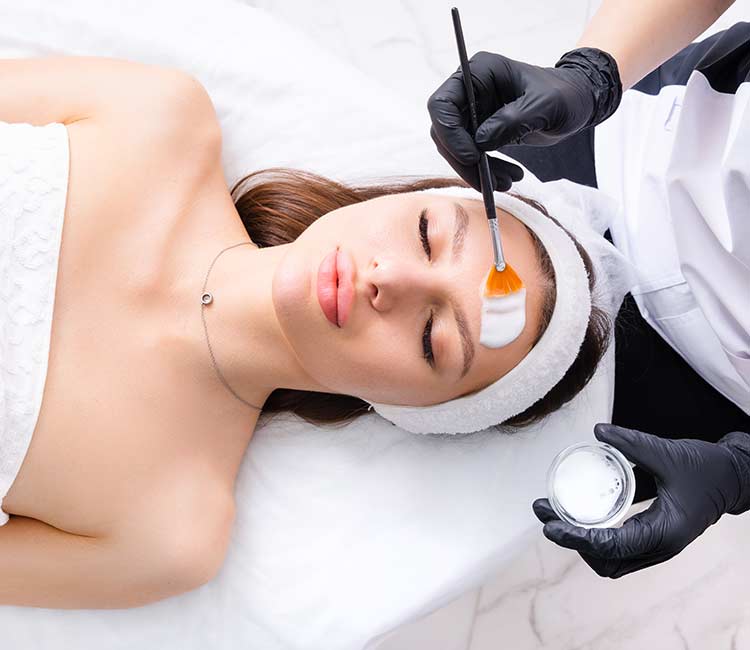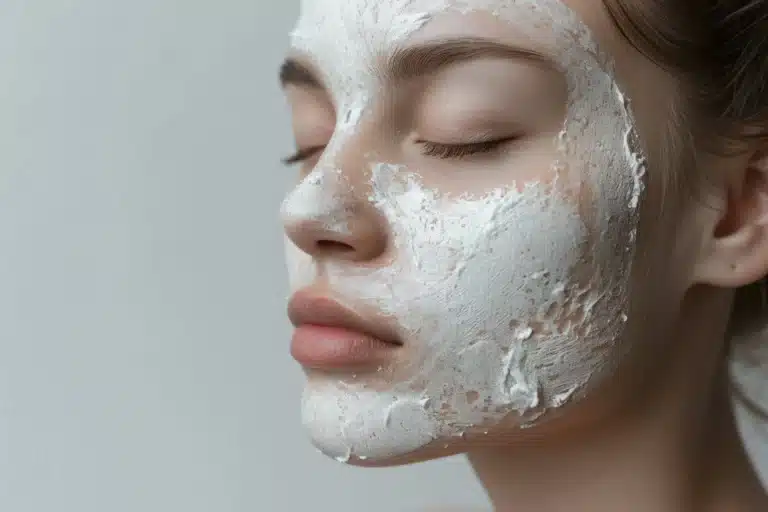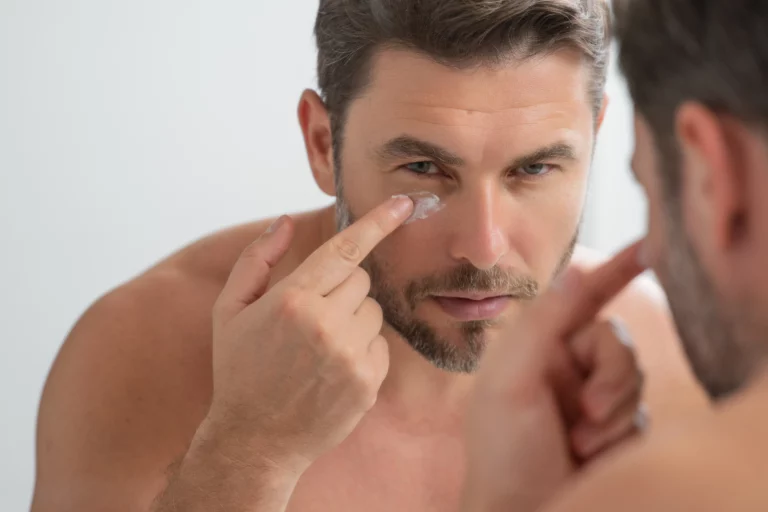A medium peel is a dermocosmetic treatment that involves applying a chemical solution to the skin to exfoliate the superficial and middle layers of the epidermis. Unlike light peels, which only target the uppermost skin layers, a medium peel penetrates deeper, allowing it to treat more pronounced skin concerns. It is often used to correct signs of aging, improve skin texture, and even out the complexion. This type of peel is generally performed using laser or acids such as trichloroacetic acid (TCA) in specific concentrations tailored to each skin type and concern.
The medium peel is an increasingly popular aesthetic medicine treatment for those looking to improve the quality and texture of their skin. This procedure helps address various skin issues such as wrinkles, pigmentation spots, acne scars, and other imperfections by stimulating cell renewal, resulting in smoother and more radiant skin.
Although the treatment requires a recovery period, the results are long-lasting and visible. Before undergoing this procedure, it is recommended to consult an experienced physician to ensure the medium peel is suitable for your skin type and aesthetic goals.
The TCA peel is considered a medium-depth peel when used at effective concentrations.
A chemical agent, trichloroacetic acid, is used to penetrate deeply, down to the mid-dermis.
There are different concentrations of TCA : the higher the concentration, the deeper the penetration into the skin tissue.
A 15% TCA peel is considered superficial, fruit acid peels are generally preferred for this level.
A 20–25–30% TCA concentration corresponds to a medium peel.
A 40% TCA peel is considered deep, but in such cases, phenol is often preferred.

The principle behind a medium peel is the application of a chemical agent (often trichloroacetic acid) that causes controlled exfoliation of the skin. This process removes dead skin cells from the surface and stimulates the production of collagen and elastin—two key elements for firm, elastic skin. During the procedure, the chemical solution penetrates the middle layers of the skin to eliminate damaged cells and boost cellular regeneration. A few days after the treatment, the skin begins to peel, revealing a fresh new layer of healthier, smoother, and more radiant skin.
The medium peel is recommended for patients looking to address a variety of moderate skin concerns.
• Mild to moderate wrinkles and fine lines : this peel is ideal for softening wrinkles, especially around the eyes and mouth.
• Pigmentation spots : it is effective in reducing age spots, sun spots, and post-inflammatory hyperpigmentation.
• Acne scars : superficial to moderately deep acne scars can be significantly improved with this treatment.
• Dull or uneven complexion.
• Improved skin texture : helps refine skin texture, leaving it softer and more even.
• Premature skin aging : patients seeking to slow down the visible signs of aging, often caused by prolonged sun exposure, will benefit from this treatment.
• Global rejuvenation : the medium peel stimulates collagen production, leaving the skin looking younger and more revitalized.
• Skin laxity.
• Radiance boost.
• Keratoses.
• Actinic keratoses : Dr. Romano prefers to refer the treatment of these precancerous lesions to dermatology specialists.
• Enlarged pores.

In certain cases, a medium peel cannot be performed due to contraindications :
• Pregnancy.
• Wearing a pacemaker or cardiac defibrillator.
• Chronic illnesses such as diabetes or severe organ insufficiencies (e.g. renal or cardiac failure).
• Use of Isotretinoin within the past year.
• Ongoing acne treatments.
• Recent aesthetic procedures (surgery, laser, dermabrasion).
• Active skin infections or herpes.
• Dark skin phototypes.
• Contact skin allergies.

A medium peel can be performed on various areas of the body, although the face remains the most commonly treated zone. It’s important to note that there are several types of medium peels depending on the depth of penetration: superficial-medium, standard medium, and deep-medium. For areas other than the face, only superficial-medium peels are typically recommended.
• Face : to treat wrinkles, fine lines, acne scars, and pigmentation spots.
• Neck : to firm and even out the skin, which often shows signs of aging.
• Décolleté : frequently exposed to the sun, this area may develop pigmentation and fine lines that respond well to a medium peel.
• Hands : to rejuvenate the skin and reduce age spots.

A medium peel is performed in a medical practice by an experienced doctor.
Before the session, a consultation is necessary to assess the patient’s specific needs and confirm the suitability of this peel for their skin and aesthetic goals.
On the day of the peel, it’s best to come to the clinic without makeup, contact lenses, or any cream applied to the face. Men should shave the night before.
Before applying the peeling solution, the skin is thoroughly cleansed to remove impurities or residues.
The exfoliating agent—usually trichloroacetic acid (TCA)—is then applied evenly to the area being treated. The patient may feel a slight tingling or a temporary burning sensation. Depending on the desired depth of penetration, local anesthesia may or may not be used.
The number of passes and duration of application are adjusted based on skin type and the condition being treated.
The peel acts immediately, causing intense redness and a whitening of the skin (known as “frosting”).
At the end of the session, the skin is red and swelling begins to appear.
Dr. Romano then applies a healing cream over the treated area and provides specific instructions for post-care during the recovery period.
Le déroulement d’un peeling moyen au laser est similaire au peeling chimique, mais on emploie l’énergie du laser pour exfolier les couches superficielles et moyennes de la peau.
Dr. Romano favors the Laser peelfor several reasons :
• The heat generated during the laser treatment helps tighten the skin. The laser significantly improves skin laxity.
• For equal results, laser peels involve fewer complications and milder after-effects compared to chemical peels.
Après avoir nettoyé la zone à traiter, le faisceau laser est balayé de manière ciblée sur la surface à traiter, contrôlant la profondeur de l’exfoliation selon les besoins du patient. Le laser stimule la régénération cutanée en éliminant les cellules mortes et en favorisant la production de collagène. Ce traitement est moins invasif qu’un peeling chimique classique et offre une récupération plus rapide, tout en procurant des résultats visibles en termes de lissage, d’éclaircissement et d’amélioration de la texture de la peau.

Skin preparation is mandatory prior to the procedure—it enhances and evens out the penetration of the peeling agent and helps prevent potential post-peel pigment rebound.
To ensure both the effectiveness and safety of the treatment, certain precautions must be observed.
• Avoid sun exposure : one month before the session, it is essential to avoid prolonged sun exposure and to apply a high-protection sunscreen daily.
• Skin preconditioning : apply a glycolic acid–based cream every evening for three weeks before the session, and discontinue all exfoliating products or procedures (such as waxing, scrubs, or laser treatments) during those three weeks.

After a medium peel, the skin becomes more sensitive and requires specific care to ensure proper and optimal healing.
• Medication compliance : Dr. Romano will prescribe antibiotics, antiviral prophylaxis (for herpes prevention), and a healing cream to be used for ten days.
• Strict sun protection : sun exposure must be strictly avoided for at least one month. During this period, a broad-spectrum sunscreen must be applied daily without exception.
• Hydration : use the recommended healing cream to help maintain skin hydration and support the healing process.
• No picking or peeling : it is crucial not to pick at any scabs or flaking skin, as this may lead to scarring.
• Medical follow-up : the patient must adhere to the doctor’s post-care instructions and attend all scheduled follow-up appointments.
Results from a medium peel begin to appear approximately one week after the session, once the peeling process is complete. The skin appears smoother, more radiant, and rejuvenated. Pigmentation spots are faded, fine lines are reduced, and skin texture is visibly improved. Depending on the depth of the peel performed, results can last for several years.
The recovery period typically includes pronounced redness and swelling for about 48 hours. From the third day, the skin darkens and begins to peel within 7 days, revealing new, pinkish, firmer skin.
This rosy tone generally lasts for about a month.
For a true medium-depth peel, one week of social downtime should be expected.
Although rare, the following complications may occur :
• Edema, persistent redness, excessive peeling or exfoliation.
•
Bacterial infection (impetigo) or viral outbreak (herpes flare-up).
•
Acne flare-ups that may require targeted treatment.
•
Hyperpigmentation (dark spots) or hypopigmentation (white spots), which may be permanent.
•
More visible demarcation lines between treated and untreated areas (e.g., hairline, jawline).
The price of a medium peel ranges between 600 CHF and 1,200 CHF per session, depending on several factors. The cost mainly varies according to the depth of the peel performed, the complexity of the skin condition being treated (such as pronounced pigmentation spots, scarring, skin laxity, or keratosis), and the size of the area involved.
Unlike superficial peels, a medium peel acts deeper within the skin, allowing the desired result to be achieved after just one session. In most cases, a single session is sufficient. However, in specific situations, a complementary treatment may be considered after evaluation.
A full clinical assessment is carried out during the initial consultation in order to define a tailored protocol and provide a clear and accurate quote.
Most patients who have undergone a medium peel report high satisfaction, particularly regarding improvements in skin texture and reduction of pigmentation. Many appreciate the noticeable skin rejuvenation achieved without the need for invasive procedures.
However, it’s important to note that there is a recovery period that can last up to two weeks, during which the skin peels and becomes sensitive. The duration of this downtime is discussed with the patient beforehand, depending on their aesthetic goals, which determine the depth of the peel to be performed.
Oui, les peaux mates, jusqu’au phototype IV, peuvent bénéficier d’un peeling moyen, mais avec précaution. Il est essentiel de choisir des acides adaptés et de préparer la peau avant le traitement pour minimiser le risque d’hyperpigmentation post-inflammatoire.
A medium peel works on the superficial dermis, helping to correct pigment spots, fine lines, and minor skin imperfections. A deep peel penetrates deeper into the dermis and targets pronounced wrinkles, scars, and more severe skin damage.
Il est recommandé d’attendre 5 à 7 jours avant de maquiller la peau, le temps que l’épiderme se régénère et que les rougeurs diminuent, afin d’éviter toute irritation.
No, due to the higher risk of side effects, especially scarring, medium peels are not recommended for other areas.
Un peeling moyen peut être réalisé tous les 6 à 12 mois, selon les besoins de la peau et les recommandations du médecin. Des séances d’entretien peuvent être planifiées pour prolonger les résultats.
A medium peel can be adapted for sensitive skin with a gentle formulation and specific preparation. A prior skin assessment is essential to avoid adverse reactions and ensure a safe treatment.